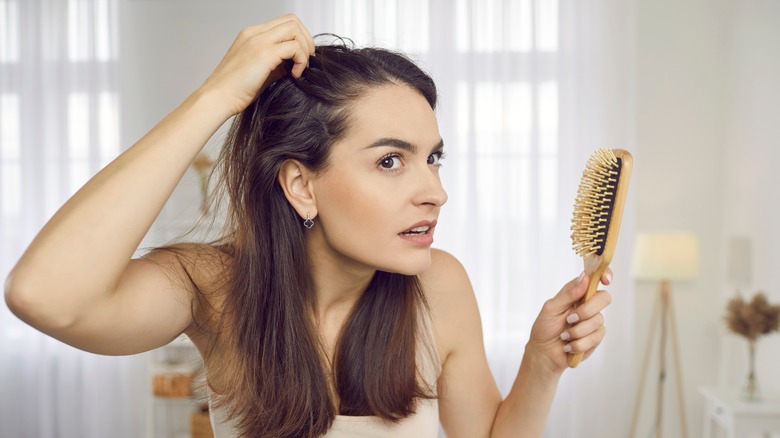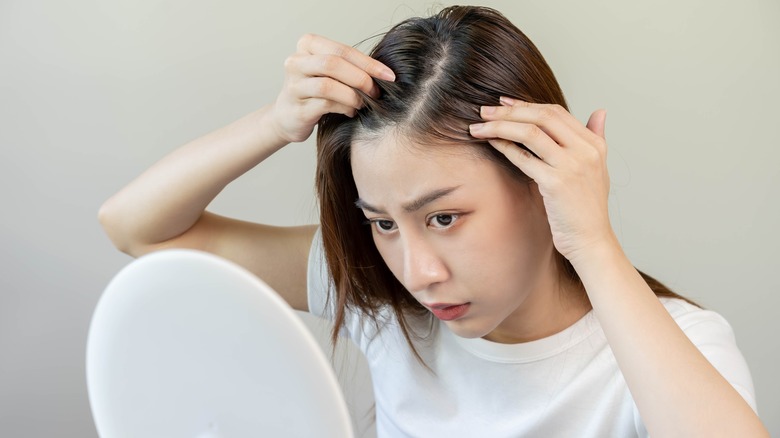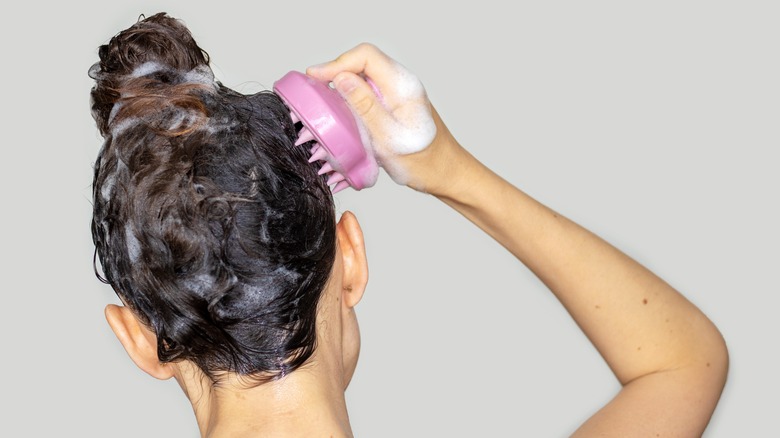You Can Get Ingrown Hairs On Your Scalp? Yep, Here's The Deal
In life, there are three things that are said to be certain: death, taxes, and ingrown hair. Fine, that may not be how the age-old adage goes, but it's almost guaranteed that as long as you have hair growing on your body, you can experience having ingrown hair.
You're more susceptible to having those small, itchy, and sometimes painful bumps on your body when you perform hair removal like shaving, waxing, tweezing, and epilating regularly. The most frustrating part? Ingrown hairs can grow in just about any body part that grows hair, including your legs, arms, armpits, face, and even your pubic area, aka your crotch. According to Mayo Clinic, ingrown hair happens when a hair follicle that's supposed to protrude from the skin decides to reenter it instead, resulting in irritation and inflammation.
Ingrown hair can even grow on the scalp, too, especially if you shave your head. It can be frustrating to have to deal with pimple-like blemishes on the scalp, but luckily, there are ways to treat and prevent them.
What causes ingrown hairs to form on the scalp?
There are two main reasons why ingrown hair can form on the scalp, or any part of your body, for that matter. For starters, dermatologist Dr. Anita Sturnham told Glamour UK that when the condition of your skin is not at its best, the likely ingrown hair will develop. "The follicular opening can become clogged with a build-up of skin cells, which then trap the hair, impeding its natural progress out of the skin," she explained. "Hair pierces the follicle wall growing into the surrounding skin."
Hair removal is the more obvious culprit, since you don't always shave or yank out the hairs correctly, or you tend to stretch your skin when you're working the razor. "When the hair strands are cut too short, they retract back and get trapped in the skin. Sometimes, the hair curls back into the skin and the hair follicle closes over the curled hair which causes the hair to grow underneath the skin," Dr. Adeline Kikam, a board-certified dermatologist, shared with InStyle. "As the hair grows back, it can break into the wall of the hair follicle resulting in inflammation of the surrounding skin."
Unfortunately, you can even have ingrown hair if you're not doing anything at all, which is usually a problem for people with curly strands. Because of the curved shape of the hair follicle, it's more likely to reenter the skin.
Is it possible to banish them for good?
Let's rip the metaphorical band-aid off real quick: You cannot completely dodge ingrown hair on your scalp, or anywhere else in your body, for as long as hair grows there. The good news is there's a long list of ways to remove them, regardless of whether they are on your scalp, legs, or groin.
You can start by ensuring that your skin is always clean, moisturized, and exfoliated. Byrdie notes that a scalp scrub can help on this front, as they're specially formulated to prevent oil buildup from happening on your head. "Use this scrub before shampooing and massage directly onto the scalp, follow with shampoo and a moisturizing conditioner," board-certified dermatologist Dr. Fatima Fahs advised. Another trick is to kick dead skin cells to the curb using shampoo infused with salicylic acid or using a scalp serum.
If an ingrown hair somehow still manages to develop on your scalp, you can resort to the tried and tested tea tree oil to accelerate healing. A more natural version of salicylic acid, tea tree oil has antibacterial properties that deliver gentle exfoliation and infection prevention. Just like with the scalp scrub, all you need to do is apply your tea tree oil-infused shampoo to your hair, massage your scalp, and wait for the ingrown hair to subside in a few days. And whatever you do, avoid picking at the skin, as it can only lead to scarring.


